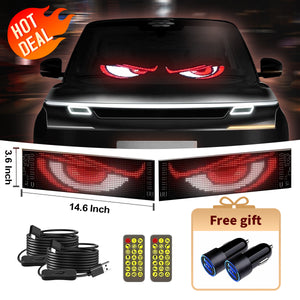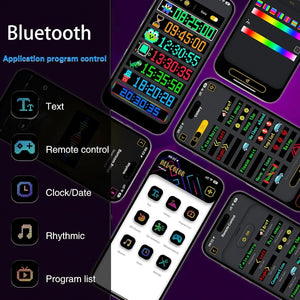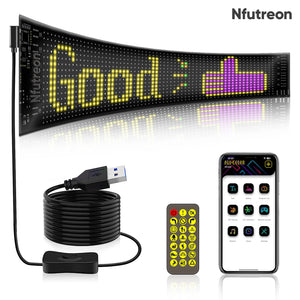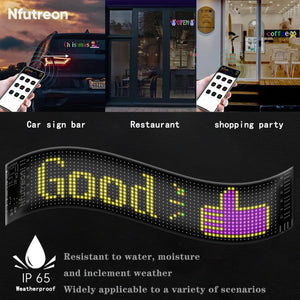Flexible LED screens are becoming a popular choice for many applications, from advertising to entertainment. But what sets them apart isn't just their flexibility—it's also how bright they can get. In this article, we'll dive into what factors affect the brightness of these screens and explore some effective methods for optimizing it. Let’s get started!

Introduction to Flexible LED Screens and Brightness Control
What Are Flexible LED Screens?
Flexible LED screens are displays that can bend and curve without breaking. Unlike traditional flat screens, they offer more versatility in design and can fit into various shapes and spaces. You might have seen them in creative digital displays, curved walls, or even wearable technology.
Key Characteristics of Flexible LED Screens
The main advantage of flexible LED screens is their adaptability. They’re lightweight, easy to install, and offer high-quality images with vibrant colors. But to get the best out of these screens, you need to pay close attention to their brightness.
Importance of Brightness in Display Quality
Brightness is crucial for any display because it directly affects how visible the screen is under different lighting conditions. For example, a screen that's too dim won't be visible in bright sunlight, while one that's too bright might consume too much power or strain the viewer's eyes in a dark room. So, controlling brightness is key to maximizing the performance and longevity of flexible LED screens.
Factors Affecting Brightness in Flexible LED Screens
LED Quality and Efficiency
The type and quality of LEDs used in the screen greatly influence its brightness. Higher quality LEDs produce brighter images and have a longer lifespan.
Types of LEDs Used in Flexible Screens
Not all LEDs are the same. Some are designed to be brighter and more efficient than others. High-quality LEDs, like those used in premium screens, often offer better brightness and color accuracy.
Impact of LED Quality on Brightness and Longevity
Using better LEDs doesn't just improve brightness; it also enhances the screen’s durability. High-quality LEDs tend to last longer, reducing the need for frequent replacements and maintenance.
Screen Design and Pixel Density
Another factor that affects brightness is the design of the screen, particularly the pixel density.
How Pixel Density Influences Brightness
Pixel density refers to the number of pixels per unit area on the screen. Higher pixel density means more pixels packed into a smaller space, which can make the screen look sharper and clearer. However, if not managed correctly, it can also reduce brightness because each pixel has less space to emit light.
Trade-offs Between Brightness and Resolution
There's always a balance between brightness and resolution. Increasing pixel density can improve image quality, but it might lower brightness. The key is finding the right balance for your specific needs.
Power Supply and Energy Management
The power supply also plays a significant role in controlling brightness.
The Role of Power Supply in Maintaining Optimal Brightness
A strong and stable power supply ensures that the screen maintains consistent brightness levels. If the power supply fluctuates, the brightness may also vary, which can affect display quality.
Energy Efficiency vs. Brightness Levels
Higher brightness usually means more energy consumption. However, efficient power management systems can help balance brightness with energy savings, making the screen both effective and economical.
Environmental Factors and Viewing Conditions
Finally, the environment where the screen is used can impact its brightness.
Ambient Light Effects on Screen Brightness
Screens need to be brighter in environments with a lot of ambient light, like outdoors during the day. On the other hand, indoor settings with controlled lighting may require less brightness.
Adjusting Brightness for Outdoor and Indoor Settings
Flexible LED screens often come with adjustable brightness settings to adapt to different environments. Automatic brightness adjustment can enhance visibility and save energy by lowering brightness in low-light conditions.
Methods for Optimizing Brightness in Flexible LED Screens
Dynamic Brightness Adjustment Techniques
There are several ways to dynamically adjust brightness to optimize screen performance.
Automatic Brightness Control Systems
These systems use sensors to detect ambient light and automatically adjust the screen’s brightness accordingly. This is a great way to ensure the screen is always visible without wasting power.
User-Controlled Brightness Settings
Some screens allow users to manually adjust brightness based on their preferences or specific needs. This flexibility is useful for applications where lighting conditions change frequently.
Hardware Enhancements for Improved Brightness
Improving the hardware can also help optimize brightness.
Upgrading LED Components and Power Supply Units
Using more efficient LEDs and upgrading the power supply can boost brightness without increasing power consumption. This is especially useful for large displays or those used in bright environments.
Using Reflective and Diffusive Materials
Materials that reflect or diffuse light can help improve screen brightness and image clarity. These materials ensure that light is evenly distributed across the screen, enhancing visibility and reducing glare.
Software Solutions for Brightness Optimization
Software also plays a crucial role in managing brightness.
Algorithms for Adaptive Brightness Control
Advanced algorithms can dynamically adjust brightness based on content and ambient light levels, ensuring optimal visibility at all times.
Integration with Smart Sensors and IoT
Integrating smart sensors and IoT technology allows screens to automatically adjust brightness in real-time, based on environmental changes and user preferences.
Case Studies of Brightness Optimization in Different Scenarios
Outdoor Advertising Displays
Outdoor displays need to be bright enough to be seen clearly, even in direct sunlight.
Challenges and Solutions for High Brightness Requirements
Outdoor screens often use high-brightness LEDs and advanced cooling systems to maintain performance without overheating or consuming excessive power.
Indoor Commercial Applications
Indoor displays, such as those in shopping malls or airports, require a different approach.
Balancing Brightness and Power Consumption
For indoor use, the focus is on balancing brightness with energy efficiency, ensuring the display is eye-catching without being overpowering or costly to run.
Future Trends in Brightness Control Technology for LED Screens
Innovations in LED Technology and Materials
The future of LED screens looks bright—literally!
New Developments in Energy-Efficient LEDs
New types of LEDs are being developed that offer even better brightness and efficiency, reducing energy costs while maintaining high-quality display performance.
Future Prospects for Quantum Dot and MicroLED Displays
Quantum dot and MicroLED technologies promise even higher brightness levels with lower power consumption, potentially revolutionizing the industry.
Advanced Control Systems and AI Integration
Artificial Intelligence (AI) is making its way into brightness control.
Potential of AI in Predictive Brightness Adjustment
AI can predict when and how to adjust brightness based on historical data, user habits, and environmental conditions, providing a more seamless viewing experience.
The Role of Machine Learning in Enhancing User Experience
Machine learning algorithms can learn from user preferences and automatically adjust settings to enhance viewing comfort and screen performance.
Conclusion
Controlling brightness in flexible LED screens is all about finding the right balance. By considering factors like LED quality, screen design, power management, and environmental conditions, you can optimize screen brightness for any application. With ongoing advancements in technology, the future of flexible LED screens is set to become even more dynamic and efficient.





